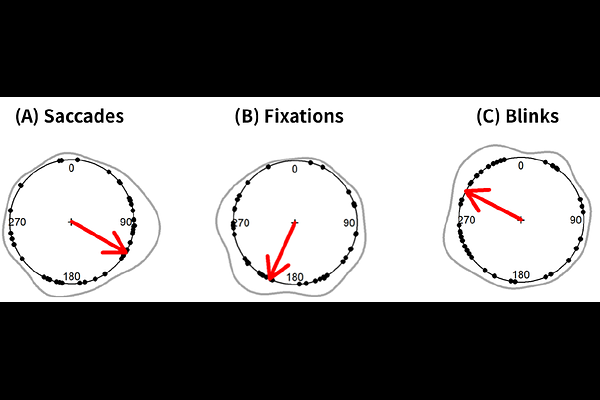Cardiac-phase gating of eye movements: evidence from a gaze-contingent "search-light" paradigm

Cardiac-phase gating of eye movements: evidence from a gaze-contingent "search-light" paradigm
Hisada, A.; Isomura, T.
AbstractHumans actively sample their environment by alternating rapid saccades for exploration with fixations for detailed perception, as high-resolution vision is restricted to the fovea. Efficient visual sampling depends on the precise coordination of these eye movements. Here, we show that this coordination is gated by the cardiac cycle. Using a gaze-contingent \"search-light\" paradigm that limits visibility to a foveal window-thereby inducing frequent saccades and clearly dissociating the roles of saccades and fixations during natural-scene exploration-while simultaneously recording electrocardiography (ECG), we found that saccades occur predominantly during systole, when baroreceptors are active, whereas fixations predominate during diastole, when baroreceptor-mediated afferent signals are quiescent. These findings identify the heartbeat as an internal clock that choreographs when we explore and when we perceive, revealing a mechanism through which interoceptive signals organize spontaneous perception-action cycles.